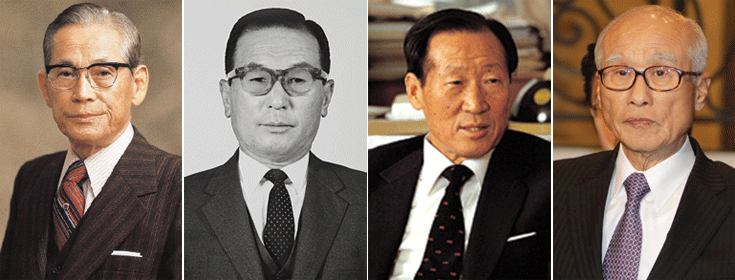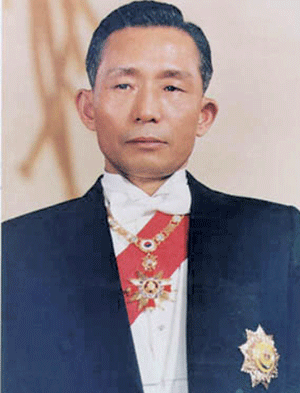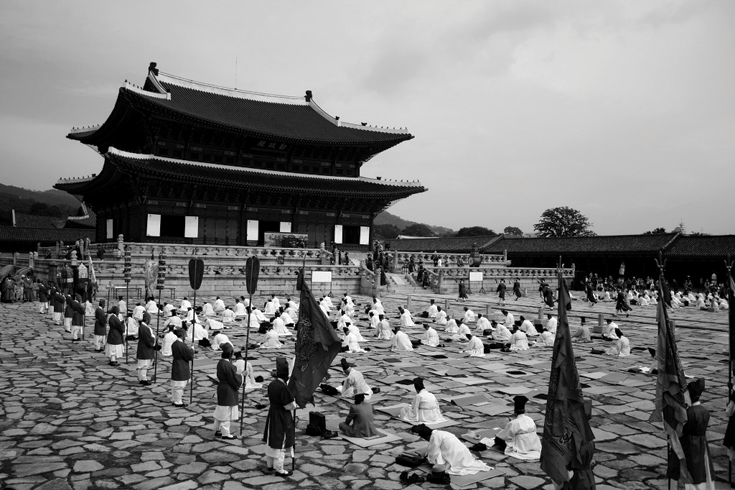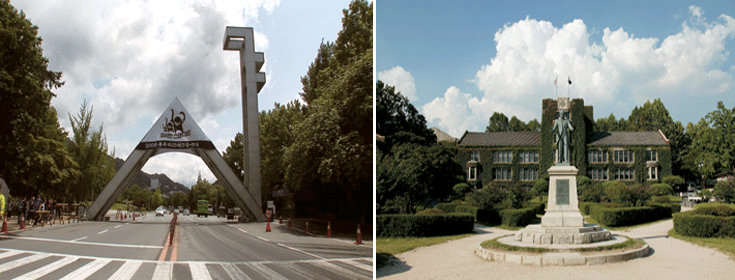ECONOMY
European countries have high transparency, bigger revenue
Want a high per-capita GNI?
Get rid of official corruption!

The European countries have the highest per-capita GNI (gross national income) in the world, while they have the lowest corruption rating. This means the more honest the people, the larger their income. In contrast, the higher the corruption rating, the lower the per-capita income.

So, where does the Republic of Korea (south) stand on this matter?
You saw it in the preceding article, Yujeon Mujoe Mujeon Yujoe, which means, “He who has money is innocent; he who has no money is guilty.” South Korea is way below the European countries in the transparency rating and naturally the country’s per-capita GNI is small roughly in that proportion.
According to the findings of Transparency International for 2012, the transparency rating of the different countries were as follows:
Denmark: 1 (rank) 90 (score)
Finland: 1 (rank) 90 (score)
New Zealand: 1 (rank) 90 (score)
Sweden: 4 (rank) 88 (score)
Singapore: 5 (rank) 97 (score)
Switzerland 6 (rank) 86 (score)
Austria: 7 (rank) 85 (score)
Norway: 7 (rank) 85 (score)
Japan:17 (rank) 74 (score)
USA: 19 (rank) 73 (score)
Taiwan 37 (rank) 61 (score)
South Korea: 45 (rank) 56 ( score)
Italy: 72 (rank) 43 (score)
China 80 (rank) 39 (score)
India 94 (rank) 36 (score).
North Korea: 174 (rank) 8 (score)
Somalia: 174 (rank) 8 (score).
Both North Korea and Somalia were the lowest in rank and score in the world in transparency ranking and score points.
In an almost direct proportion of the above rates, the per-capita GNI of these countries were:
Denmark: $59,770
Finland: $46,940
New Zealand: $29,140
Sweden: $56,210
Singapore: $47,210
Switzerland: $82,730
Austria: $48,160
Norway: $98,860
Japan: $47,870
United States: $50,120
Taiwan: 20,200
South Korea: $22,670
Italy: $33,840
China: $9,210
India: $3,840
North Korea: $1,200
Somalia: $114
Professor Kang Myung-jae of Ewha Womans University in Seoul has recently published an interesting report.
Professor Kang stated that if the county is corrupt, the people are poor because the GDP of the country does not grow when hampered by the official and social corruption.
The relatively high corruption rating of the country notwithstanding, however, South Korea made a remarkable economic development and growth beginning in the second half of the 1960s, and continued the rapid development with heavy and chemical industries in the 1970s and 1980s. Thereafter, South Korea heavily invested in information-telecommunications industries, semiconductor and smart phones and other such equipment by successfully transforming the economic growth paradigm from the old system to a new one.
How was it possible for South Korea to continue its economic development and growth in spite of the high corruption ratio?

Professor Kim cites the relationship between economic growth and distribution of its result. Here are some key points from Professor Kim’s report:
Economic development and corruption conflicts with each other and yet they are complementary to each other at the same time.
From the position of the government, it is difficult to attain the two goals, economic development and adequate distribution of the fruit of development, within a short period of time. There is no omnipotent policy that enables economic development and distribution at the same time. In the short-range policy, economic growth and distribution of its result conflict with each other. All the same, there is no viable economic growth in a country where there is no adequate distribution of the result of the economic development and growth. From a long-term view point, adequate distribution of the fruit of economic growth is a requirement for continued growth of the economy.
Adequate distribution of the fruit of the economic growth and social welfare that maintain the balance of the society are something that only the state can and should do. In the 1970s and 1980s under the strictly government-led economic system in Korea when the country tried to imitate the model of the industrialized countries and catch up with them and when performance was the basis for reward, positions were given and distribution of the income was made relatively in a fair manner. And it was possible thanks to the educational system that was used at the time.
It was possible at that time because “Dragons were born out of the small streams,” which is an old Korean saying corresponding to “Rise from a humble family,” “Rags to riches,” or “Black hen lays white eggs.”
A number of dragons were born from small streams and ditches regardless of difference in the socio-economic status of their parents as the future positions and income of the children were concomitant to their educational achievements.
The educational system at the time was very much different (better) from today when the private educational market has enormously grown vis-a-vis the public educational system that has become the target of distrust among the people.

Three to four decades ago, the public schools were sufficient for the students to train themselves enough to secure matriculation at universities or to secure an adequate position in society. When the students graduated from the university, they did not have much difficulty in finding a job. Even high school graduates found work when they had special skills and other abilities. The schools trained students and adequately met the demand of manpower required by the society.
The educational system distributed appropriate jobs and social positions to the graduates commensurate with their academic achievements and capabilities. The public education system was open to everyone and provided an equal opportunity. The public educational system was expanded and school system was improved so that the people had an equal opportunity to improve their social status, distribution of positions, income and welfare.

So how has the educational system changed since then?
According to students who feel unduly discriminated against in the competitive university matriculation system and entrance examination system at the private schools, the public middle and high schools are rated to be inferior to private schools because the private schools pay many times larger wages to their teachers compared with those at public middle-high schools.
In extreme cases, the highest-paid teacher at the private school earns nearly 100 million won per month while the monthly salary of an average teacher at public schools ranges around 2.5 million won. The entrance cost of students and tuition at the private schools, therefore, are exorbitantly high and the ordinary people can hardly afford to send their children to the private schools.
Many members of the school committee that produces entrance exam papers are known to have close connections with the private schools and the matriculation test papers are known to have exam questions to which the private school students are familiar because they have already studied such questions.
There are private kindergartens, private elementary schools, private middle schools and private high schools, to which only the rich and well-to-do people can afford to send their children. There also are so-called ‘special-purpose high schools’ and here, as in the case of other private schools, English has a predominant place in the school curriculum.
Thus the common gripe among the majority of people in Korea is that if you don’t have money you cannot send your children to any private school and this means that none of their children can go to any prestigious university in Korea, graduation from which more or less assures a good job and good position in society.
To prevent the unfair practices at the private schools, there is a law and regulations that stipulate that they recruit 20% of the new students from needy parents, including families of a single parent. This law, too, is ‘bent’ (or broken outright) by the school owners and managers to fill the vacancies with the children of rich parents who are willing to pay a lot of money.
According to Professor Han Young-woo of Ewha Womans University in Seoul, the present situation that is overly prejudiced against have-nots did not exist even during the Feudal Period of the Joseon Dynasty (1392-1910) when the Sangin Class (Commoners) were as good as slaves compared with the Yangbang Class (Nobility).
At the Gwageo State Examinations for High Government Positions, according to Professor Han’s report, 40 to 50 percent of the successful examinees were the young people from the Commoners’ Class and among them are even those who rose to as high a position as Prime Minister and Cabinet Ministers. The Joseon Dynasty was a truly a period when “dragons were born out of the ditches,” concluded Professor Han.
This means that the status of the Korean people today in terms of equal opportunities for all is much worse than the system that existed on the Korean peninsula 700 years ago.
In the past, the government provided substantial support and assistance to big businesses in both fund and materials so that they can grow rapidly and ‘catch up’ with the big businesses of the industrialized countries.
Today, however, it is no longer feasible because Korea under the leadership of the new government of President Park Geun-hye is now moving in the direction of future-oriented creative economic system where rule of fair trade and competition must be applied instead of the past practices of bid rigging, favoritism-influenced awarding of orders, corruption and irregularities. They are all in the way when Korea tries to assure fair trade and competition.
According to experts, fair competition must be guaranteed and opportunities must be expanded. And an end should be put to the old system where repechage and consolation races are not permitted.
In the age of global economy, they assert, competition has now become a requirement. However, it should no longer be a competition where the winner takes everything but one where the losers are given another chance for a second try.

The creative and innovative ideas of both the individuals and the organizations form an important part of the competitiveness of a country. Experts emphasize that an environment must be created where plenty of opportunities should be given all the people in a democratic manner and in such a way that the people will have no fear of failure.
According to Professor Han Young-woo of Ewha Womans University in Seoul, the present situation that is overly prejudiced against have-nots did not exist even during the Feudal Period of the Joseon Dynasty (1392-1910) when the Sangin Class (Commoners) were as good as slaves compared with the Yangbang Class (Nobility).
At the Gwageo State Examinations for High Government Positions, according to Professor Han’s report, 40 to 50 percent of the successful examinees were the young people from the Commoners’ Class and among them are even those who rose to as high a position as Prime Minister and Cabinet Ministers.
The Joseon Dynasty, where commoners heavily suffered due to class distinction, ironically was truly a period when “dragons were born out of the ditches,” concluded Professor Han. k

